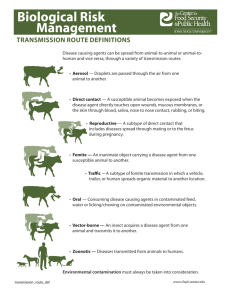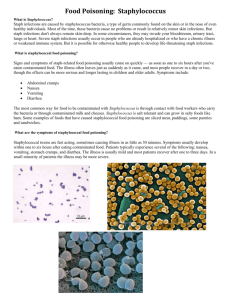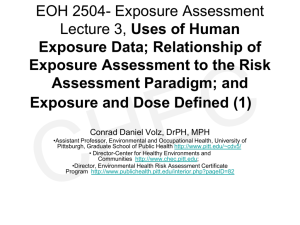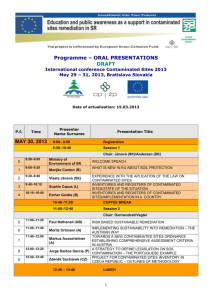Cooking and nutrition in primary schools general
advertisement
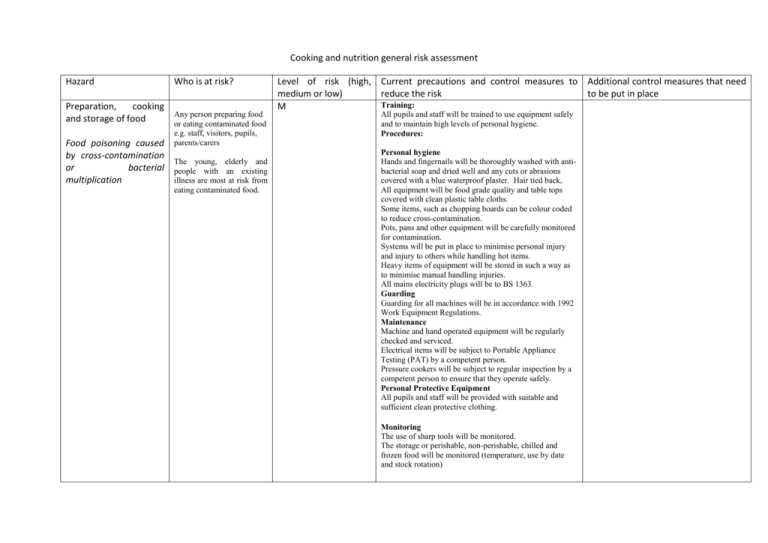
Cooking and nutrition general risk assessment Hazard Who is at risk? Preparation, cooking Any person preparing food and storage of food or eating contaminated food Food poisoning caused by cross-contamination or bacterial multiplication e.g. staff, visitors, pupils, parents/carers The young, elderly and people with an existing illness are most at risk from eating contaminated food. Level of risk (high, Current precautions and control measures to Additional control measures that need medium or low) reduce the risk to be put in place Training: M All pupils and staff will be trained to use equipment safely and to maintain high levels of personal hygiene. Procedures: Personal hygiene Hands and fingernails will be thoroughly washed with antibacterial soap and dried well and any cuts or abrasions covered with a blue waterproof plaster. Hair tied back, All equipment will be food grade quality and table tops covered with clean plastic table cloths. Some items, such as chopping boards can be colour coded to reduce cross-contamination. Pots, pans and other equipment will be carefully monitored for contamination. Systems will be put in place to minimise personal injury and injury to others while handling hot items. Heavy items of equipment will be stored in such a way as to minimise manual handling injuries. All mains electricity plugs will be to BS 1363. Guarding Guarding for all machines will be in accordance with 1992 Work Equipment Regulations. Maintenance Machine and hand operated equipment will be regularly checked and serviced. Electrical items will be subject to Portable Appliance Testing (PAT) by a competent person. Pressure cookers will be subject to regular inspection by a competent person to ensure that they operate safely. Personal Protective Equipment All pupils and staff will be provided with suitable and sufficient clean protective clothing. Monitoring The use of sharp tools will be monitored. The storage or perishable, non-perishable, chilled and frozen food will be monitored (temperature, use by date and stock rotation) Hot surfaces, equipment and liquids Burns and scalds Using small sharp tools – peelers, knives, graters Cuts Working with high risk Any person eating contaminated food. The food symptoms are diarrhoea, Food poisoning resulting from contaminated high risk food Sensory testing, allergic reactions and intolerances Food poisoning resulting from contaminated food Adverse reactions to food containing known allergens Use of small electrical equipment Electric shock, trips and falls, entrapment vomiting, and abdominal pains and in severe cases death. The young, elderly and people with an existing illness are most at risk A significant factor in increasing the risk is when work is being undertaken by inexperienced pupils.



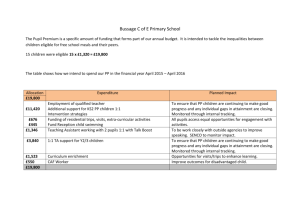
![afl_mat[1]](http://s2.studylib.net/store/data/005387843_1-8371eaaba182de7da429cb4369cd28fc-300x300.png)



